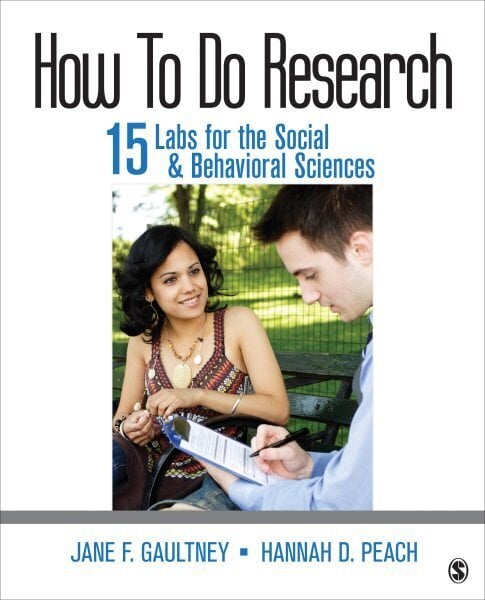Originating in activities developed over many years of teaching research methods, this book aims to supplement traditional textbooks in research methodology. It features articles and examples from a broad spectrum of social sciences. Targeting undergraduates, it also includes advanced material at the end of each lab that will make the manual useful for early graduate students as well. Each lab features a different area of social sciences. Fifteen labs and conclusion are divided into three parts: before you collection data; collecting data—research designs and tools; after collecting data. Labs are: finding a topic, finding sources, and critically reading appropriate articles; how to write a literature review; after the literature review; ethics of research; qualitative designs; case studies and single-subject designs; surveys; descriptive and inferential statistics; correlational design; regression analysis; two-group designs; multiple-groups designs; factorial designs; writing the discussion section, sharing your findings using a poster or oral presentation; tables and figures. There are references, a note to instructors, a note to students, about the authors, and illustrations. Annotation ©2016 Ringgold, Inc., Portland, OR (protoview.com)
HOW TO DO RESEARCH consists of 15 Labs designed by Jane F. Gaultney and Hannah Peach for a research methods lab/course. This manual provides a diverse set of 15 cross-disciplinary labs organized in 3 parts -- Part I - Before you Collect Data, Part II - Collecting Data - Research Design & Tools and Part III After Collecting Data. The labs include featured articles and examples across the social and behavioral sciences. Ideal for upper-level undergraduate courses but can also be used with graduate students as advanced material is included at the end of each lab. Labs begin with an objective which is covered at both a basic and advanced level, followed by a target article that illustrates the focus of the lab. Each Lab includes background information and an assignment. The Labs are consistent with the steps that would be taken with a term-long research project, beginning with coming up with a topic, to producing a finished APA style paper. Questions are embedded throughout the lab to assist the student in checking their understanding. A variety of online resources are available.
